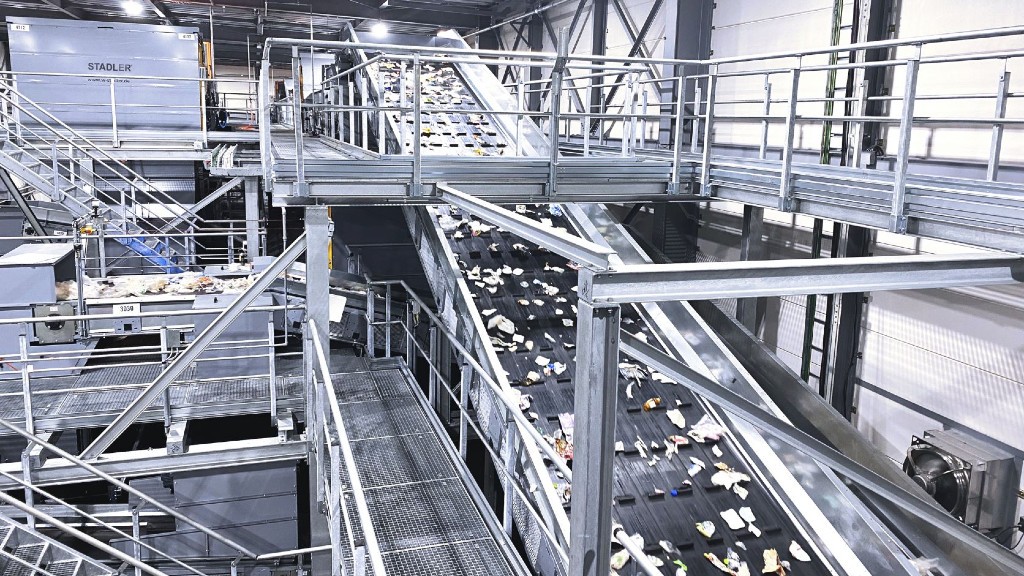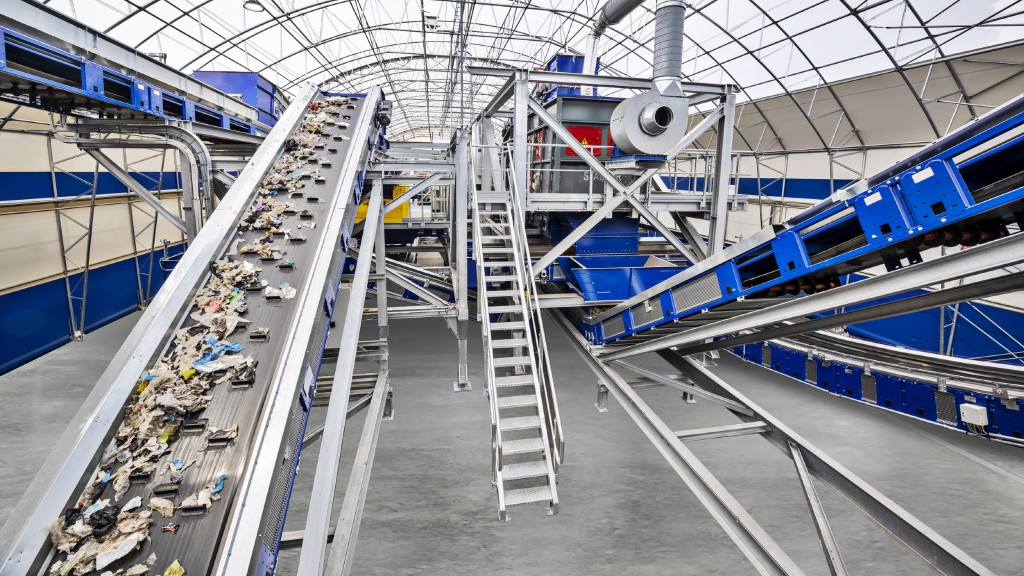
TBM is a Japanese company that aims to contribute to a decarbonized society through the development of new environmentally friendly materials and new recycling models.
TBM's LIMEX is an alternative to plastic and paper that can be used in the production of a wide variety of products such as packaging, food containers, shopping bags, and backlit film. It is mainly made of limestone, an abundant resource, and has a water footprint approximately 97 percent smaller than paper and a carbon footprint up to 40 percent smaller than plastic on a life cycle basis (depending on the type of plastic). In addition, once used, it can be recycled to produce new plastic alternative materials.
As part of its strategy to accelerate the use of LIMEX products and reduce the consumption of natural resources, TBM commissioned STADLER to design and install a new sorting plant. The facility uses the latest technologies to separate LIMEX and plastic light packaging, which is recycled into pellets for use in the production of packaging.
A custom design to help sort TBM's LIMEX material
The sorting plant receives bales of light packaging made of plastic materials and LIMEX and then sorts them into metals, PP, PE, PS, PET, mixed plastics for RDF, a 2D fraction, and fines. The sorted output materials are stored in bunkers, and the 3D PP, PE, PS, PET, and mixed plastics for RDF are subsequently fed to a baling press. The plant uses STADLER's double-deck ballistic separator, 2.9-metre wide high-speed conveyors and bunker system, as well as 5 near-infrared (NIR) automated optical sorters.
Due to the particular characteristics of the sorted materials and the space limitations in the building housing the plant, the project required some creative thinking.
"The plastic material we are processing at the plant is extremely light," explains Ursina Mutzner, international sales at STADLER. "When we ran trials with similar materials at our test centre in Germany, we saw that the paddles in the double deck ballistic separator needed to be inclined more than the maximum 25 degrees the machine is designed for. So, when we designed the plant, we decided to place the ballistic separator on a slightly sloping steel structure in order to achieve the inclination of the paddles required to ensure the best sorting quality."
"The plant roof is quite low, so there wasn't much space between the ballistic separator and the ceiling," says Takuya Sugiyama, division head of the recycling plant business at TBM. "At first, we thought we might have to remove part of the roof to place the machine, but STADLER's commissioning team made the installation without any additional work."
A brand-new recycling plant delivered on a tight schedule
The project presented several operational challenges, beginning with logistics issues and component shortages: "Because of the global supply chain situation, it was difficult to source some components," says Ursina Mutzner. "The warm commissioning was also challenging because of the shortage of test material, but we found ways of making it all work and have the plant installed and ready on time," adds Megumi Sasaki, Japanese adviser for STADLER.
"STADLER completed commissioning on schedule with a small but efficient team. It was amazing to take only 18 weeks from the beginning to hand over as originally planned," adds Takuya Sugiyama.
A collaborative approach from the beginning
STADLER views its relationship with recyclers as a partnership and will go out of its way to ensure they make the right decisions for the recycler's business and operation. For this project, STADLER organized a visit for TBM's team to view a similar plant the company had built in Hyūga, in order to see first-hand the results they could achieve at their Yokosuka facility.
When developing the design, STADLER conducted tests in Germany and then went the extra mile by testing TBM's materials at a plant in Hyüga.
"We already had a good feeling about the STADLER plant," says Takuya Sugiyama, "but the test gave us confidence on our decision and important evidence of what they could do for us."
STADLER also provided extensive training to TBM's operators so that they would be able to run the equipment effectively, and will continue to support the company as the plant operates.



